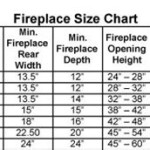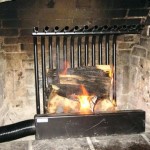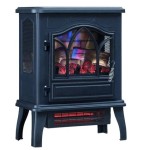The Versatile Applications of Natural Gas in Heating, Stoves, and Fireplaces
Natural gas is a widely utilized energy source, appreciated for its efficiency, cost-effectiveness, and versatility in residential and commercial applications. Its application extends to various heating appliances, stoves, and fireplaces, providing reliable and convenient solutions for warmth, cooking, and ambiance.
The utilization of natural gas in these applications involves a network of infrastructure, from extraction and processing to distribution through pipelines. Once delivered to a residence or business, the gas is connected to specific appliances designed to safely and efficiently combust it. These appliances have evolved significantly over time, incorporating advanced technologies to optimize energy usage and minimize emissions.
The appeal of natural gas stems from several factors. Its relative affordability compared to other energy sources, like electricity or propane, makes it an attractive option for budget-conscious consumers. The consistent supply provided through pipelines also mitigates the need for storage tanks, as is the case with propane, leading to space savings and reduced maintenance requirements. Furthermore, natural gas burns cleaner than alternative fossil fuels, contributing to reduced air pollution.
Heating Systems Powered by Natural Gas
Natural gas furnaces are a common method of heating homes and buildings. These systems operate by burning natural gas within a combustion chamber. The heat generated is then transferred to a heat exchanger, which warms air circulated by a blower fan. This heated air is distributed throughout the building via a network of ducts.
The efficiency of natural gas furnaces is often measured by Annual Fuel Utilization Efficiency (AFUE). A higher AFUE rating indicates a more efficient furnace, meaning it converts a greater percentage of the gas's energy into usable heat. Modern furnaces often boast AFUE ratings of 90% or higher, significantly reducing energy consumption and associated costs.
Beyond furnaces, natural gas can also power boilers. Boilers heat water, which is then circulated through radiators or baseboard heaters to provide warmth. Some boilers also produce steam for heating, particularly in older buildings. Like furnaces, boiler efficiency is a key factor to consider when selecting a system.
Another application of natural gas in heating is the use of space heaters. These smaller, self-contained units can be used to provide supplemental heat to specific rooms or areas. Vented natural gas space heaters exhaust combustion byproducts through a flue, while unvented models release them directly into the room. Unvented models require careful consideration due to potential indoor air quality concerns and carbon monoxide risk.
Recent advancements in heating technology include the development of modulating condensing furnaces and boilers. These systems adjust their heat output based on the building's heating demand, further optimizing energy efficiency and reducing fuel consumption. They also incorporate condensing technology, which recovers additional heat from the exhaust gases, further increasing AFUE ratings.
Natural Gas Stoves and Cooking Appliances
Natural gas stoves offer a responsive and precise cooking experience favored by many chefs and home cooks. The visible flame allows for immediate heat adjustments, providing greater control over cooking temperatures compared to electric stoves.
A natural gas stove typically consists of burners that ignite the gas and provide a consistent flame for cooking. The burners are controlled by knobs or dials that regulate the flow of gas to each burner. Safety features, such as automatic shut-off valves, are incorporated to prevent gas leaks.
Natural gas ovens operate similarly, utilizing a burner located within the oven cavity to generate heat. Temperature control is maintained by a thermostat that regulates the gas flow to the burner. Many modern ovens utilize convection technology, which circulates hot air to ensure even cooking.
Commercial kitchens often rely heavily on natural gas stoves and ovens due to their reliability, power, and rapid heating capabilities. The ability to quickly adjust temperatures and maintain consistent heat is crucial for efficient food preparation in high-volume settings.
Beyond stoves and ovens, natural gas can also power other cooking appliances, such as grills and outdoor cooking stations. These appliances provide convenient options for outdoor entertaining and grilling.
Although gas stoves have advantages, it's important to note they do emit some pollutants, including nitrogen dioxide (NO2). Proper ventilation, such as a range hood that vents to the outside, is recommended to minimize indoor air quality impacts.
The Ambiance and Warmth of Natural Gas Fireplaces
Natural gas fireplaces provide a convenient and aesthetically pleasing source of heat and ambiance. Unlike wood-burning fireplaces, they eliminate the need for firewood storage and the associated mess. They also offer greater control over heat output and can be easily turned on and off with the flick of a switch or the push of a button.
Natural gas fireplaces come in a variety of styles, from traditional designs that mimic wood-burning fireplaces to more modern and contemporary models. They can be installed in existing fireplaces or as stand-alone units.
Vented gas fireplaces require a chimney or vent to exhaust combustion byproducts to the outside. Ventless gas fireplaces, on the other hand, do not require a vent, but they must be equipped with oxygen depletion sensors to ensure safe operation. Ventless models are subject to specific regulations and may not be permitted in all jurisdictions.
The flames in a natural gas fireplace are typically created by burning gas over ceramic logs or other decorative elements. The flames can be adjusted to create different flame patterns and heat outputs. Some models also include features such as remote controls and thermostats.
Aside from the aesthetic appeal, gas fireplaces offer a practical heating solution. Some units are designed to provide supplemental heat to a room, while others can be used as a primary heating source. They offer a quick and efficient way to warm a space without the effort and cleanup associated with wood-burning fireplaces.
The installation of a natural gas fireplace should be performed by a qualified professional to ensure proper venting, gas connections, and safety features are in place. Regular maintenance, including cleaning and inspection of components, is also essential to ensure safe and efficient operation.
In addition to traditional fireplaces, natural gas can also be used to power outdoor fire pits and patio heaters. These appliances provide warmth and ambiance for outdoor gatherings, extending the use of outdoor spaces into cooler months.
The cost of operating a natural gas fireplace depends on several factors, including the price of natural gas, the fireplace's heat output, and the frequency of use. However, natural gas fireplaces are generally more cost-effective than electric fireplaces.
When selecting a natural gas fireplace, it is crucial to consider the size of the room, the desired heat output, and the available venting options. Consulting with a qualified professional can help ensure that the selected fireplace is appropriate for the specific application.
The use of decorative accessories, such as glass beads or stones, can enhance the visual appeal of a natural gas fireplace. These accessories can be arranged around the burner to create different flame patterns and add a touch of personal style.
Regulations and safety standards govern the installation and operation of natural gas fireplaces. It is important to comply with all applicable codes and regulations to ensure safe and reliable operation.
The evolution of natural gas fireplaces continues with innovations in design, efficiency, and safety features. Manufacturers are constantly developing new models that offer improved performance and aesthetics.

Stowe Hearthstone Stoves

Lakefield Xl Direct Vent Freestanding Gas Fireplace Stove Kozy Heat

Rais Gabo Gas Ii Stove For

Benefits Popularity Of Gas Fireplaces Stoves And Fireplace Inserts

Gas Stoves Made In Usa Lopi

Gas Fireplaces Inserts And Stoves N Fixin S

Freestanding Gas Burning Stoves Sierra Hearth And Home

Mini Franklin Soapstone Gas Stove Woodstove

Gas Stoves Freestanding Stove Fireplaces Napoleon

Keith Porter Insulation Fireplaces
Related Posts








